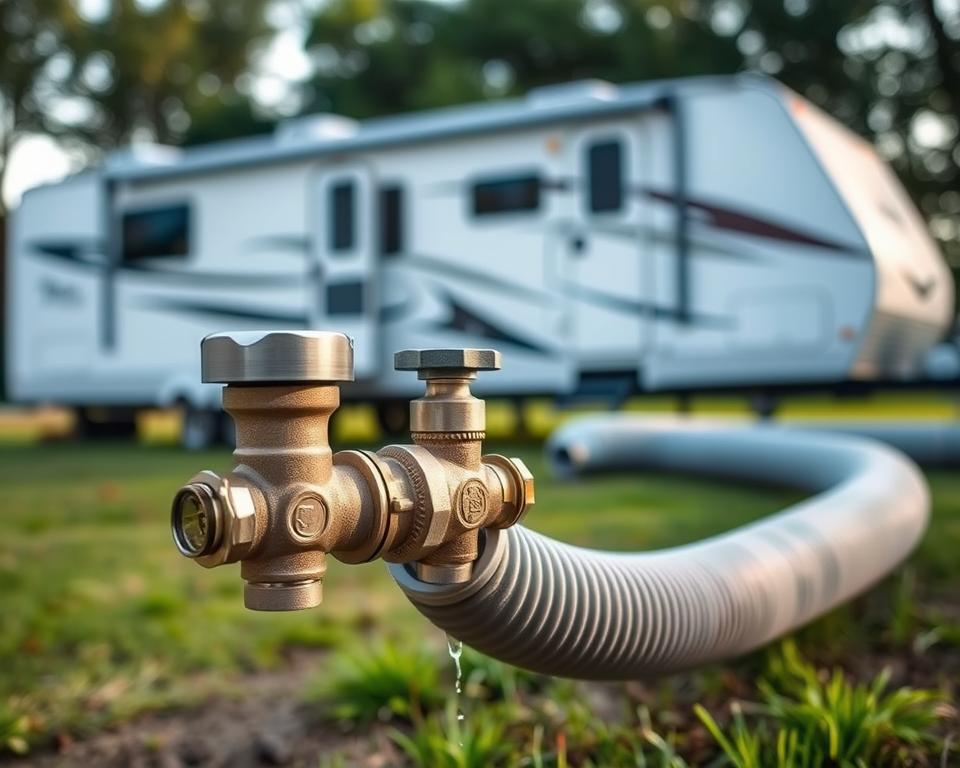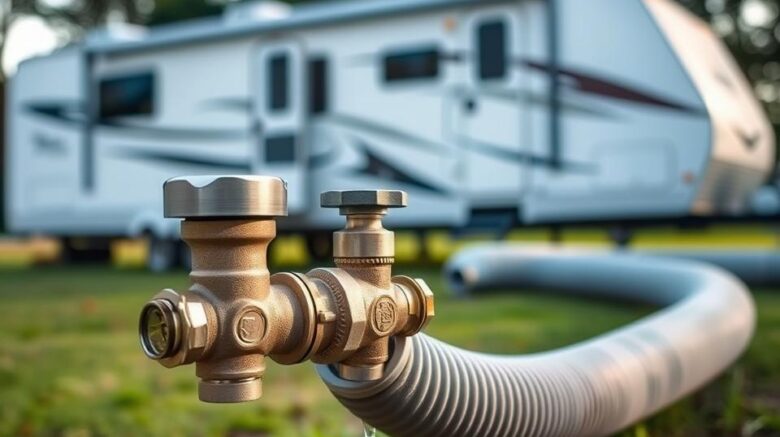Recreational Vehicle Water Tank plus Pump: – Comprehensive Handbook
Eager to know the ingredient to seamless roaming?? It’s all about your RV fresh-water Tank and Pump. Whether you’re venturing into national parks or a quick weekend retreat, getting a grip on your RV’s water system is vital. In this guide we explore the fundamentals: the parts, upkeep, and strategies for glitch-free travel. Knowing each component, from the pipework to Tank filling, ensures water is always ready during your outings – grey water tank pump.
Essential Highlights
- Getting familiar with the RV fresh-water setup elevates your travel fun.
- The RV water Tank and Pump are central for a consistent water supply.
- Routine maintenance prolongs the lifespan of your RV plumbing.
- Knowing proper fill techniques for your Tank correctly can prevent future issues.
- Fixing your water Pump can save you from surprise problems.
Breaking Down RV Water Systems
RV water systems divide into two primary parts: the potable-water setup and the used-water mechanism. The clean-water circuit houses several key elements like the storage Tank, Pump, and faucets, resembling domestic plumbing but adapted to the mobile needs of life on wheels.
Using clean water is paramount for the system’s efficiency. It safeguards the safety of all passengers. It’s important to keep the RV plumbing in excellent order through regular maintenance – covering proper drainage to prevent leaks and other hiccups. Frequent inspections let RV enthusiasts avoid water-related surprises during their journeys.

Why You Need the RV Fresh-Water Tank
The RV water Tank is key for a successful journey. It holds the clean water needed for drinking, cooking, and cleaning. The capacity of this container varies with each RV model, impacting how much water can be stored – and directly dictates how long you can travel before requiring a refill.
Maintaining the RV storage Tank hygienic is critical. Regular cleaning keeps at bay harmful contaminants, ensuring water remains safe for use. Neglecting maintenance can encourage bacteria or algae growth, making the water hazardous.
Appreciating the RV Tank’s role enhances water management on the road. Diligent upkeep and timely refills deliver a stress-free experience. It’s key to have ample water for all travel needs, guaranteeing a trouble-free RV adventure.
Filling Your RV Water Tank
Filling your RV fresh-water reservoir demands attentive action to guarantee it’s done correctly. There are two primary methods: gravity-feed filling and city-pressure filling. Perfecting these techniques noticeably enhances your RV experience.
Gravity filling is direct. All you need a drink-safe water hose. Attach this hose to a water source, then to the fill opening, and let gravity handle the fill. Remember to keep an eye on the water level to prevent spills.
Using city pressure involves a city water connection, offering faster fill times. You need to use a pressure regulator to manage water flow. Attach the hose from the municipal source to your RV. This approach delivers quick and consistent supply to your Tank.
Either method you use, adhere to these key safety tips: Always monitor the Tank when filling to prevent overflow, and use potable water to ward off health issues. Knowing these filling and safety techniques will make your RV trips even more enjoyable.
RV Water Tank and Pump: Parts in Focus
The RV water Tank and Pump are vital to any RV’s plumbing system, providing a consistent and smooth water supply for all your needs. The RV water Pump’s main job is to move water from the Tank, ensuring clean water is always available. That’s vital for cooking, cleaning, and showering.
RV plumbing utilises different Pump types, each with distinct benefits. Diaphragm pumps are favoured for their consistent water pressure, while centrifugal models are loved for simplicity and energy thrift. It’s important to weigh flow rate, noise, and installation ease when choosing your Pump.
To sum up, the RV water Tank and Pump are indispensable to your water system’s functioning. A robust Pump delivers strong pressure and smooth flow, enhancing your overall travel experience.
Picking the Right RV Pump
Choosing the correct RV water Pump is key for your water system’s peak performance. When picking a Pump, considering a few points is critical for a great camping experience. Ensuring it fits your RV’s water system is paramount.
Keep these important aspects in mind:
- Flow Rate: Choose a Pump with a flow rate that matches your usage needs. A stronger flow means faster Tank refills.
- Pressure Ratings: Your RV’s various fixtures determine the required pressure levels. Pick a Pump whose specs align with those needs for smooth operation.
- Noise Levels: Noise can be an issue with some Pumps. If you prize silence, compare models for their noise output.
Brands like Shurflo and VEVOR are among the top picks for many RVers, and they offer stand-out perks. A thoughtful assessment of these brands will assist your purchase process.
Grasping these factors is not only important for the right purchase but also prepares DIY tinkerers with practical know-how for upkeep and replacements.
Hooking Up to City Water for Your RV
Connecting your RV to city water provides an uninterrupted supply of fresh water, moving you beyond just using your Tank. This ensures a more convenient camping experience. Be sure to follow safe steps for a secure hookup.
First, identify the city water connection port on your RV. It’s usually marked by a white or black connector, sometimes marked for ease. Use a potable water hose designed for RVs; this grade of hose keeps your water safe from contaminants.
It’s essential to attach a pressure regulator before making the connection. This device protects your plumbing by controlling the water pressure. With the regulator in place, connect the hose from it to the water source.
Once connected, monitor the water pressure. Maintain a steady, gentle flow to avoid hose damage. Check your hoses regularly for any wear or leaks and promptly replace parts as needed.
Sticking to these steps for city hookup boosts your camping convenience and helps in maintaining your RV’s condition.
Looking After Your RV Fresh-Water Tank
Making sure your RV’s fresh-water reservoir is in good order is vital for safe, clean water while out on adventures. A clean Tank wards off bacterial growth and contamination. For starters, regularly sanitise the Tank: combine water with a bit of bleach for an efficient residue-free clean.
It’s crucial to look for leaks and monitor Tank pressure. Regular checks can detect problems early, sparing expensive fixes. A maintenance routine preserves the water system in top shape.
To streamline maintenance, create a checklist:
- Check water levels and quality regularly.
- Sanitise the Tank every six months with a bleach solution.
- Inspect for leaks in the reservoir.
- Monitor Tank pressure and Pump function.
- Flush the Tank to remove any sediment buildup.
RV Water Pump Troubleshooting
RV water Pump issues can be annoying, derailing travel plans in a flash. Facing strange noises, experiencing low pressure, or suffering complete Pump failure are typical problems. Understanding how to troubleshoot them can significantly improve your trips.
Hearing odd sounds from your Pump often signals a problem. Start : check for loose connections and secure them. When there’s low water pressure, checking hoses and fittings for leaks. Because a minuscule leak can greatly affect flow, prompt troubleshooting is essential.
If your Pump stops altogether, check electrical connections. Start with examining the Pump’s fuse. If the fuse is fine, continue diagnosing for wear or damage.
A step-by-step routine identifies and fixes water system issues. Routine maintenance and inspection secure easier journeys.
| Issue | Possible Cause | Suggested Solution |
|---|---|---|
| Strange Noises | Loose connections | Tighten fittings |
| Low Pressure | Leaky hoses/fittings | Find & seal leaks |
| Pump Failure | Electrical fault | Check fuse/wiring |
| No Water Flow | Blocked lines | Flush obstructions |
Best Practices for Effective RV Water Use
Travelling in isolated areas usually means limited water access. Wise use in your RV is key. By embracing smart conservation tactics, you don’t just manage resources well but also heighten camping satisfaction.
To make the most of water on the road, consider these tips:
- Take brief showers – aim for under five minutes.
- Install water-saving fixtures like low-flow showerheads and faucets.
- Reuse used water: dishwater can flush toilets or water plants.
- Monitor Tank levels regularly to prevent overflow.
- Plan water stops in advance: know filling stations along your route.
Conclusion
Understanding the ins and outs of your RV water systems is central to a satisfying travel adventure. The water Tank & Pump remain at the centre of this, requiring routine upkeep. By servicing these systems, you ensure a dependable supply and dodge potential snags.
Consistent troubleshooting and checks fetter stress and spare time. Being proactive about upkeep is crucial, particularly when you’re miles away from help. Proper care enables you to optimise water use, boosting comfort for everyone.
On your next outing, leverage this guide to tame your RV’s water systems. Making informed choices about plumbing and equipment equip you to embrace the freedom of the road. Here’s to joyous and trouble-free travels ahead!
